Japan is known for its rich cultural heritage, unique traditions, and seasonal events, each marking a special moment in the year. One of the most beloved spring celebrations is Hina Matsuri 雛祭り, or the Japanese Doll Festival, held annually on March 3.
Also called Momo no Sekku 桃の節句 (Peach Blossom Festival) or Joushi no Sekku 上巳の節句, Hina Matsuri is a centuries-old tradition where families display beautiful ornamental dolls to pray for the health, happiness, and prosperity of young girls. However, as one of the five Sekku (seasonal festivals) in Japan, it was originally meant for everyone to cleanse misfortune and welcome good fortune for the new season.
The Origin of Hina Matsuri Festival
Some believe that the name of Hina Matsuri came from Nagashi Hina 流し雛, a custom from the Heian period (8th – 12th century AD) where floating dolls made of straw or paper down a river supposedly took with them the bad luck of the wishers. The custom is still practiced in different areas in Japan.
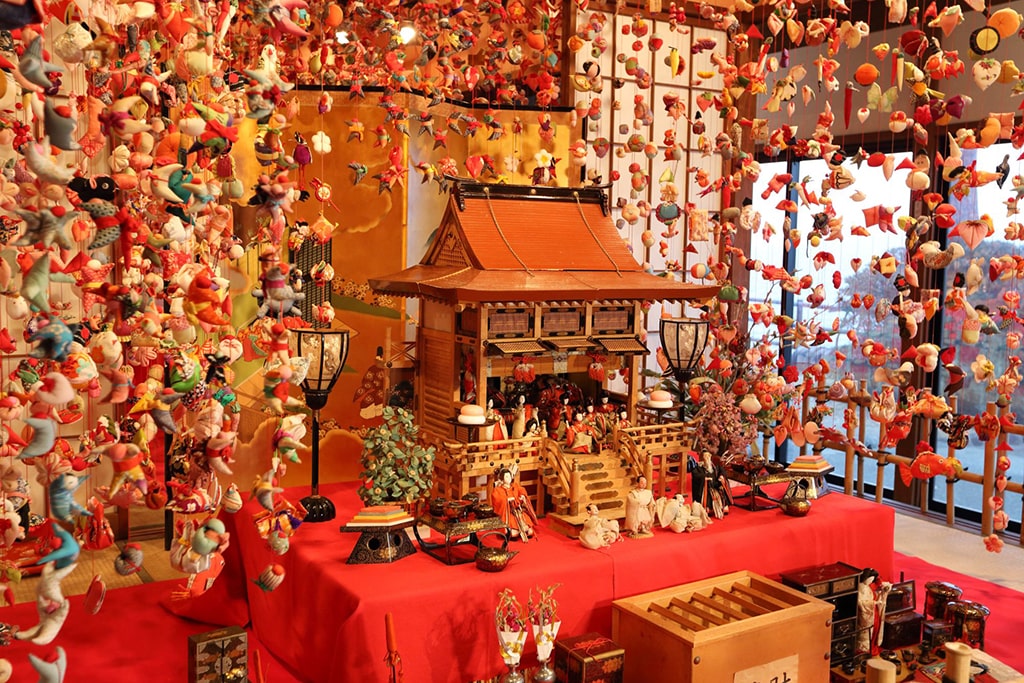
There is another belief that Hina Matsuri originated from a game called Hina Asobi 雛あそび, played by girls of the noble class in the Heian period. The dolls eventually became to gorgeous to be used as toys and only used to display starting in the Muromachi period (14th – 16th century). The modern-day version of setting up the dolls to wish for good health for girls in the house, is believed to be a combination of Nagashi Hina and Hina Asobi that started in the Edo period (17th – 19th century) and has become a celebratory custom on March 3 since then.
Hina Dolls: Setup and Meaning
The dolls — acting as substitutes to bear any bad luck of their owners — started with only one female and one male doll in the Edo period. The increasing dolls and platforms, which imitated the hierarchical system of the Imperial palace, were later additions over the years. It was a tradition for the family on the mother’s side to give a set of dolls to the girls, which eventually became part of the girls’ bridal dowry. Nowadays, the cost of the dolls can be shared by both sides’ families. Doll sets of smaller scales have become popular among modern families as well.
Top Platform
Despite the size of the set, the Dairibina 内裏雛, in other words, the Emperor 男雛 and the Empress 女雛, are always found on the top platform. There would be a vase with flowers in between the dolls, and two bonbori ぼんぼり lamps on two sides. The placement of the Dairibina depends on the family’s location or tradition; the general distinction is (from the dolls’ perspective) Emperor on the left and Empress on his right in Kansai (the general Osaka and Kyoto area), and the opposite in Kanto area (the greater Tokyo area).
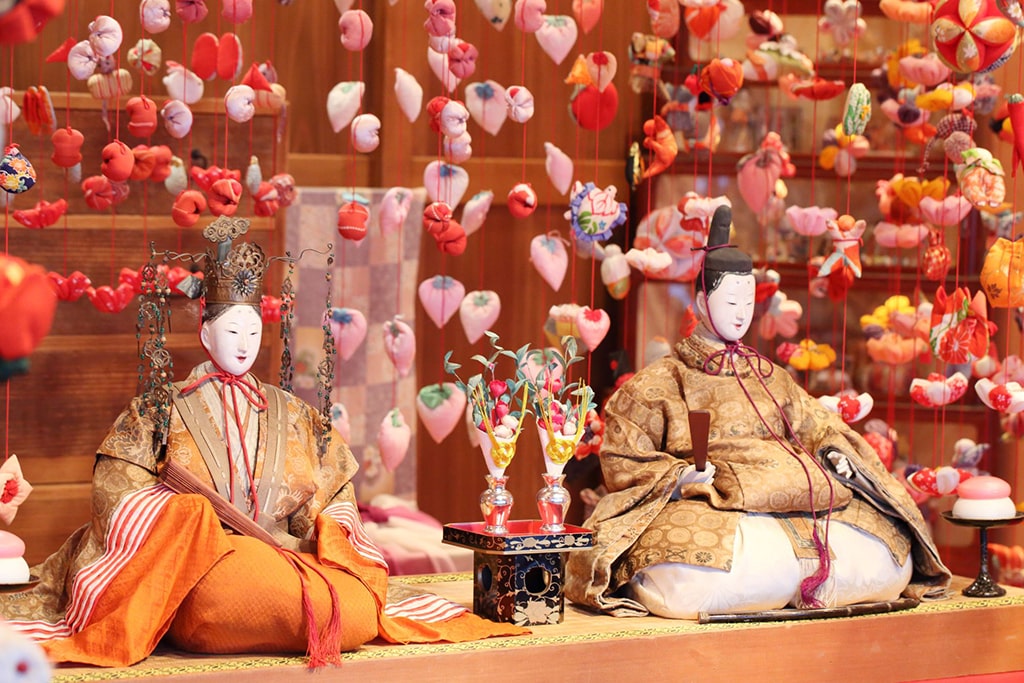
Second Platform
Under the Emperor and Empress, there will sit Sannikanjo 三人官女, or the three court ladies, with mochi 餅 placed on takatsuki 高杯 stands in between them.
Third Platform
On the third platform, there will be a five-person band, or Goninbayashi 五人囃子, who are holding (from left to right) the taiko 太鼓, the ootsuzumi 大皮鼓 (large drum), the kotsuzumi 小鼓 (small drum), the fue 笛 (flute) and the sensu 扇 (fan).
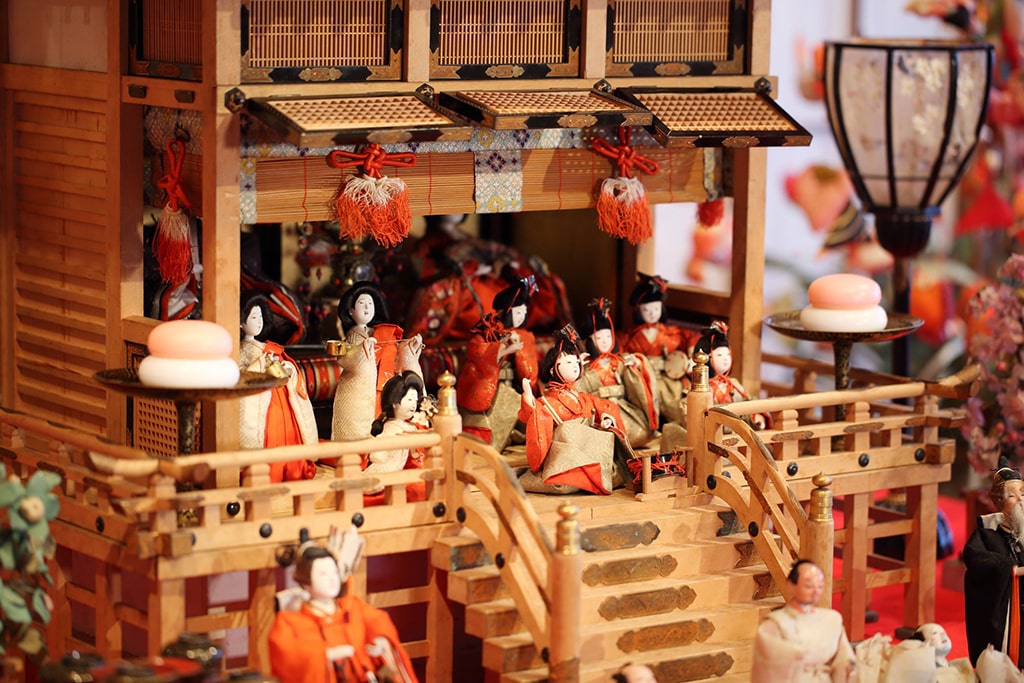
Fourth Platform
On the fourth platform, there will be two ministers, Minister of the Right 右大臣 and the Minister of the Left 左大臣. In between the ministers, you will find a rice cake in the middle and a kakebanzen 掛盤膳 (bowl table) on each side.
Fifth Platform
On the fifth, there will sit three Shichou 仕丁 (helpers) or Eji 衛士 (protectors), with three different facial expressions: laughing, angry and crying. There could be a sixth or even more platforms that follow, displaying things like furniture and carriages.
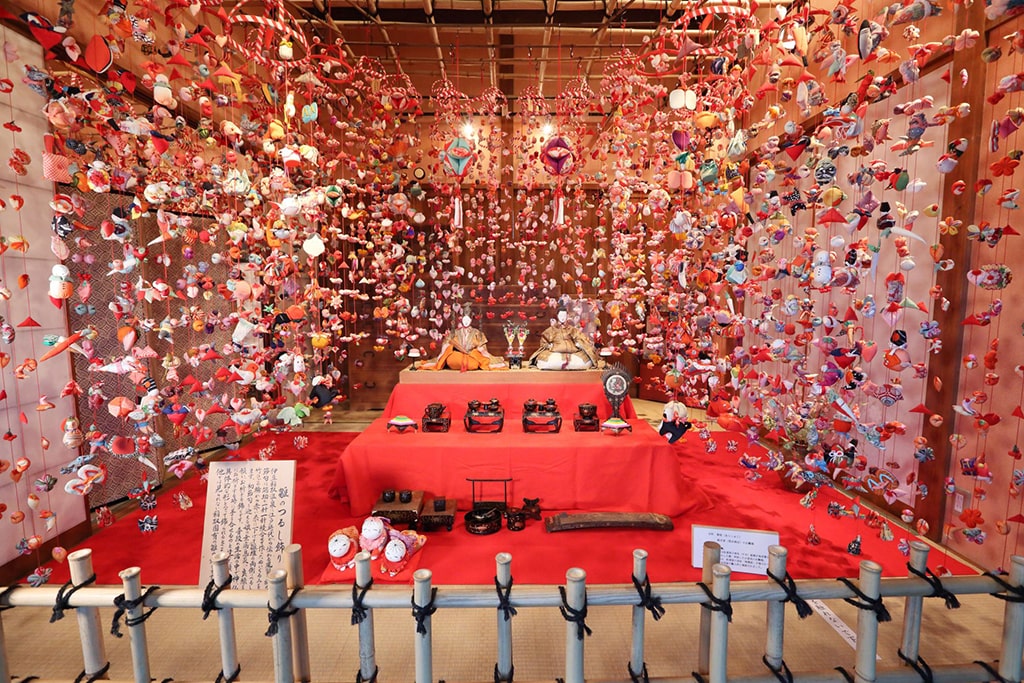
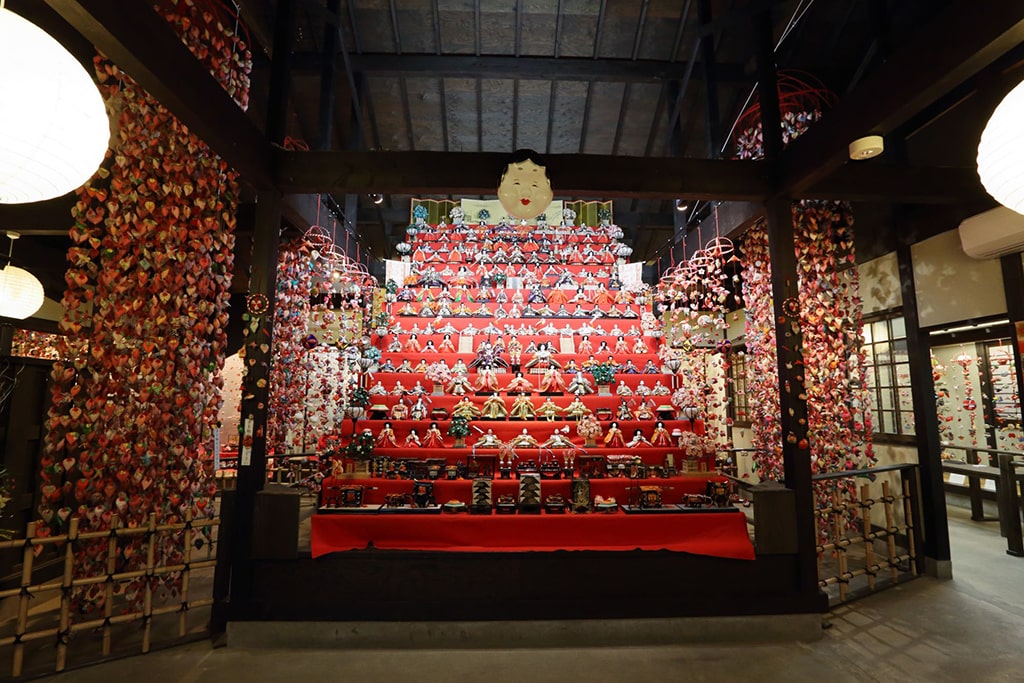
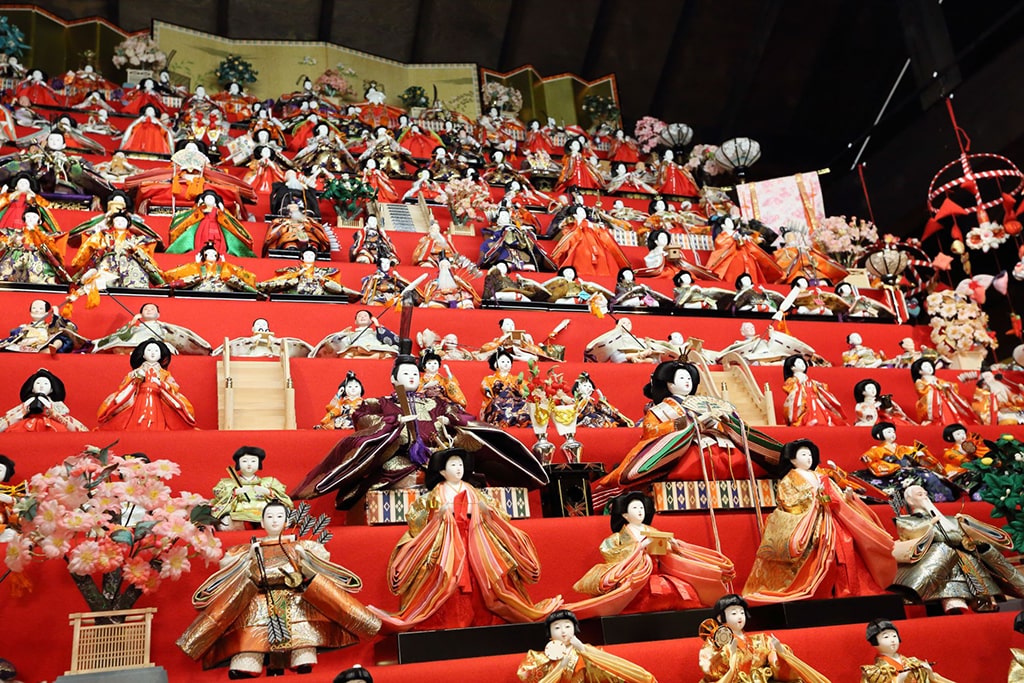
Like the placement of the Emperor and Empress, all of these little figures may be positioned differently or hold various decorations depending on the family tradition.
When is Hina Matsuri Held?
The dolls are usually taken out and put on display in the house from Risshun 立春 (First Day of Spring) until the day of Hina Matsuri. There is a popular saying that if the dolls are not packed and put away as promptly as supposed, the owner of the dolls will be married late. This is a superstition that began in the Showa period, that was actually meant to encourage girls to get into the habit of cleaning up, but practically speaking, putting the dolls away before the humid rainy season following Hina Matsuri helps to preserve their lifespan and condition.
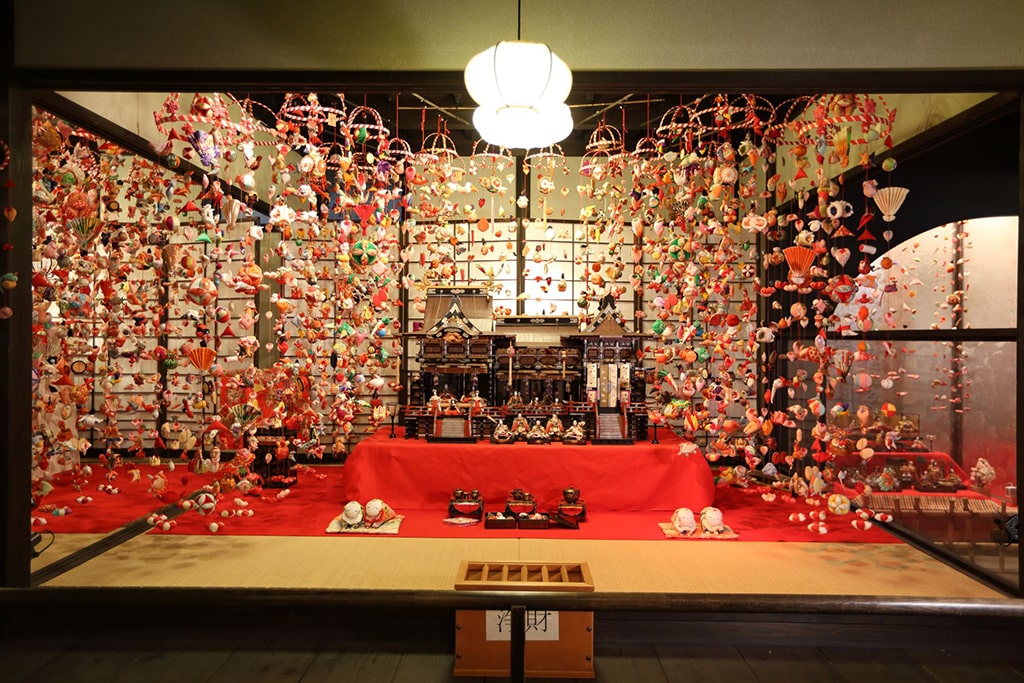
Another scarier superstition says if the dolls are not taken out of storage on time (one week before Hina Matsuri is the latest), the owner will lose her eyesight over time. This, too, started only as an encouragement for the girl to take out her dolls for Hina Matsuri.
How to Enjoy Hina Matsuri Without Dolls
For those of us who do not own any dolls at home, you can still enjoy Hina Matsuri through special traditional foods. Chirashizushi ちらし寿司, sushi rice with toppings such as sashimi, hishimochi 菱餅, pink-white-green color-layered rice cake, hina-arare 雛あられ, three-colored candy, clam soup はまぐりのお吸い物 and shirozake 白酒, white sake are some popular foods you can use to celebrate the day.
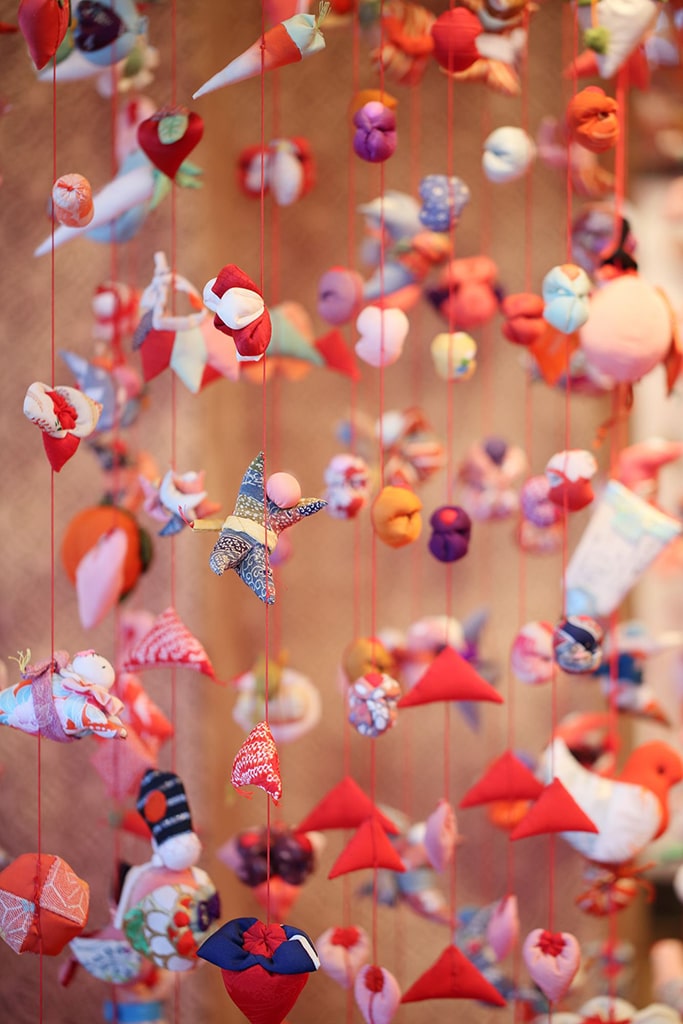
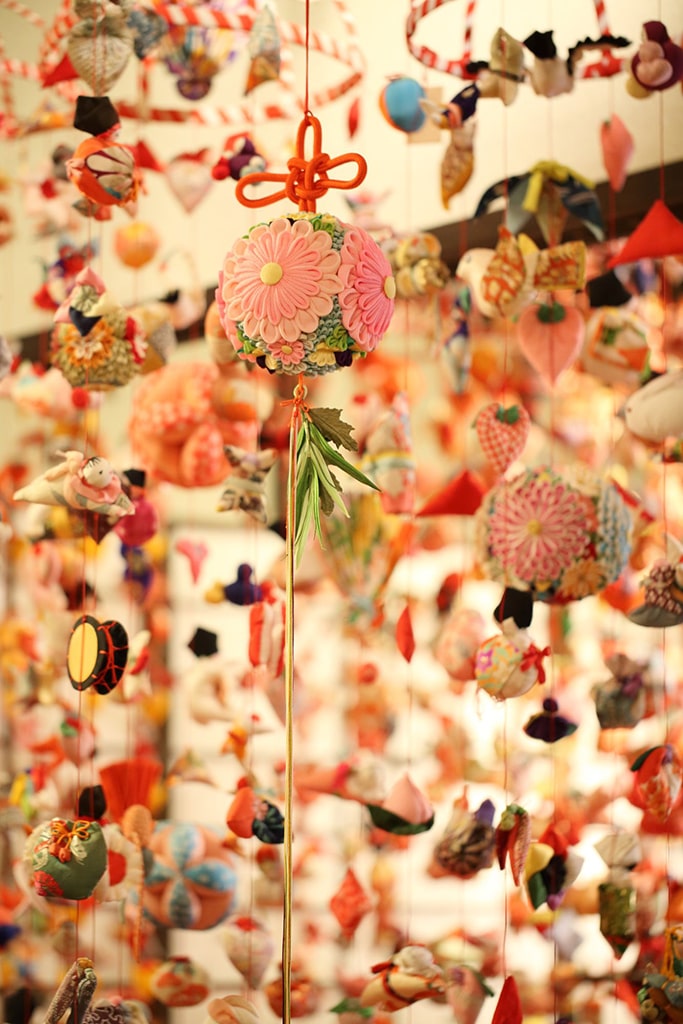
Pink, white, and green are the colors that you will see repeatedly. Some say these colors represent the image of spring (pink the blooming peach flowers, white the melting snow, and green the buds or new grass underneath). Other beliefs, especially in the case of hishimochi, assert that ingredients of these beautiful colors give actual health benefits, coinciding with the theme of Hina Matsuri: to wish for good health for the girls and the family.
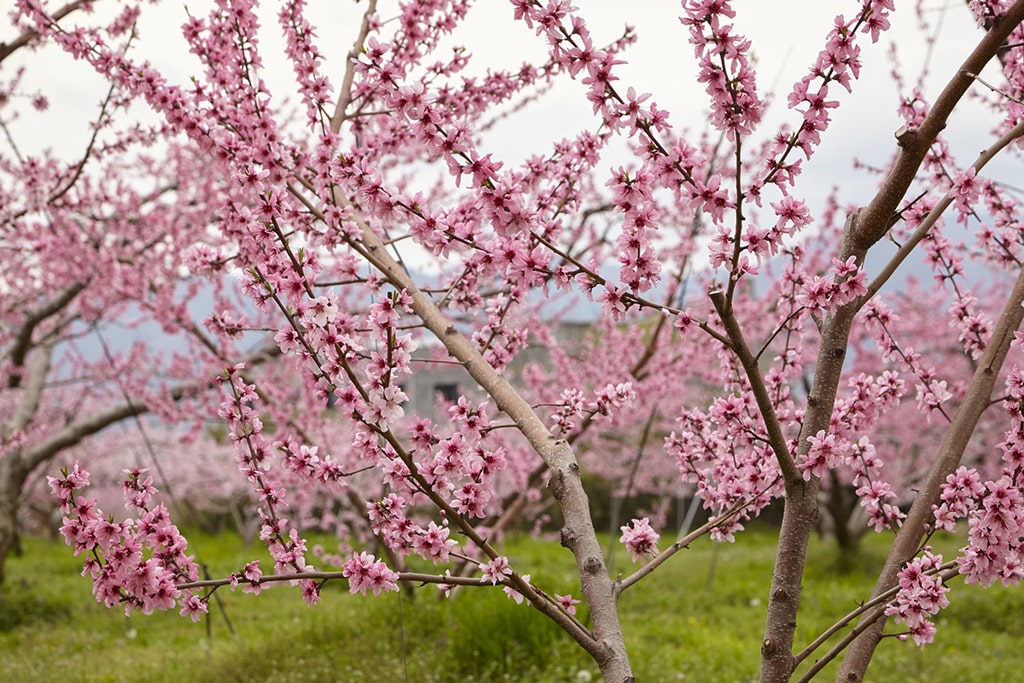

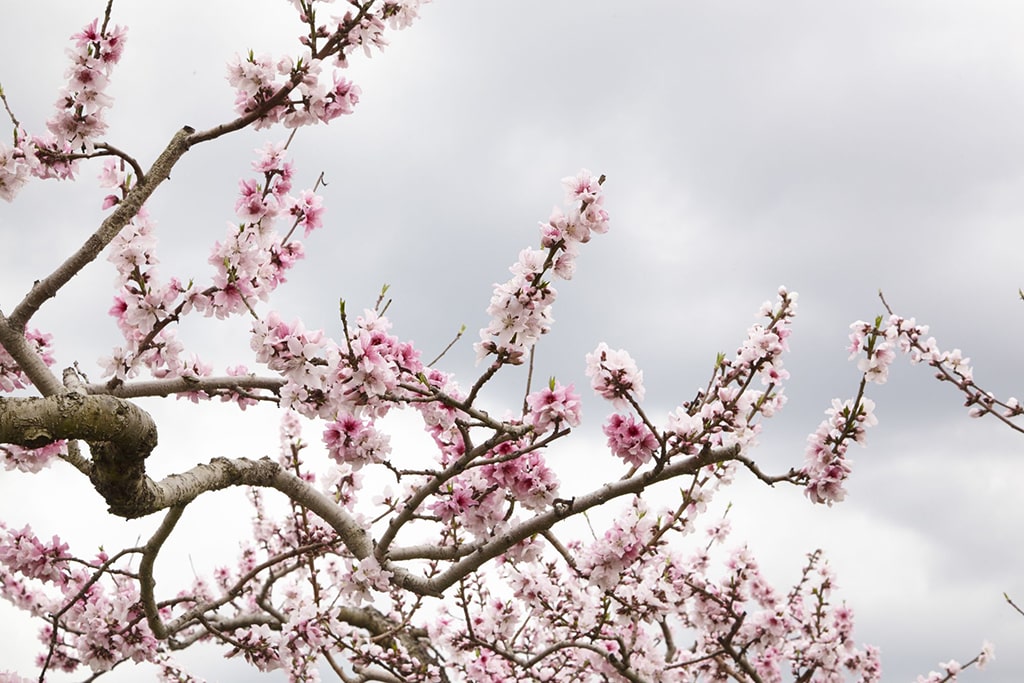
Whether you are a girl or have a daughter, Hina Matsuri is another reason for everyone to celebrate and to relish some traditional, tasty Japanese food. And don’t forget to celebrate Kodomo no Hi in May, the children’s day.
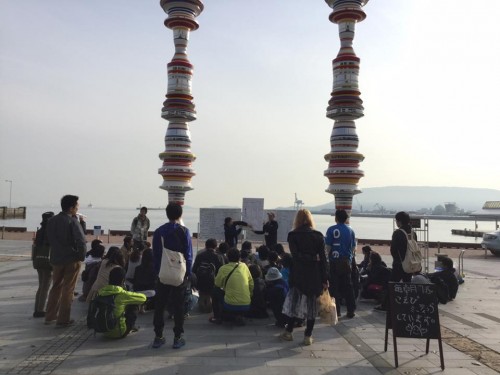
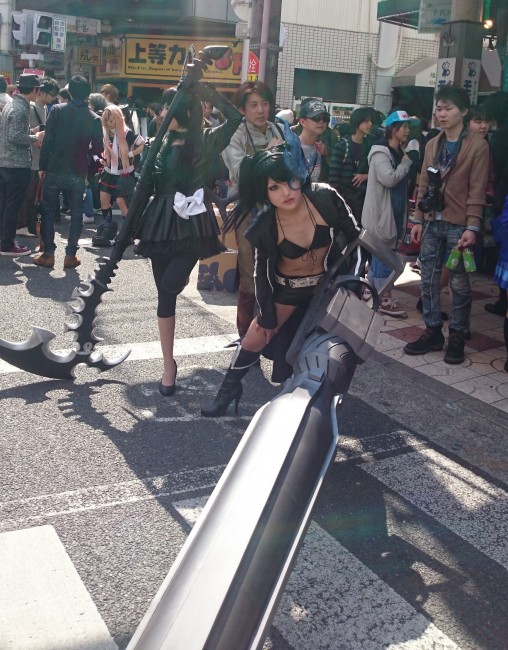

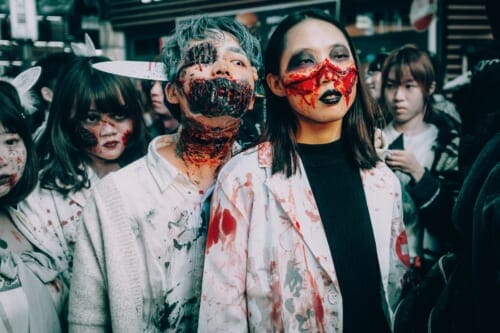
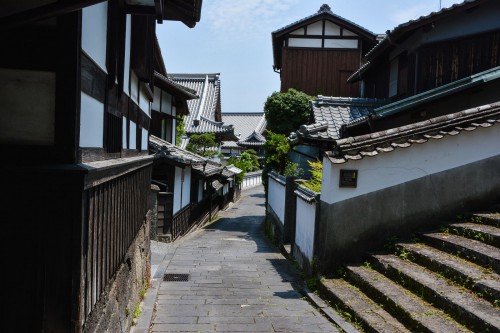


No Comments yet!